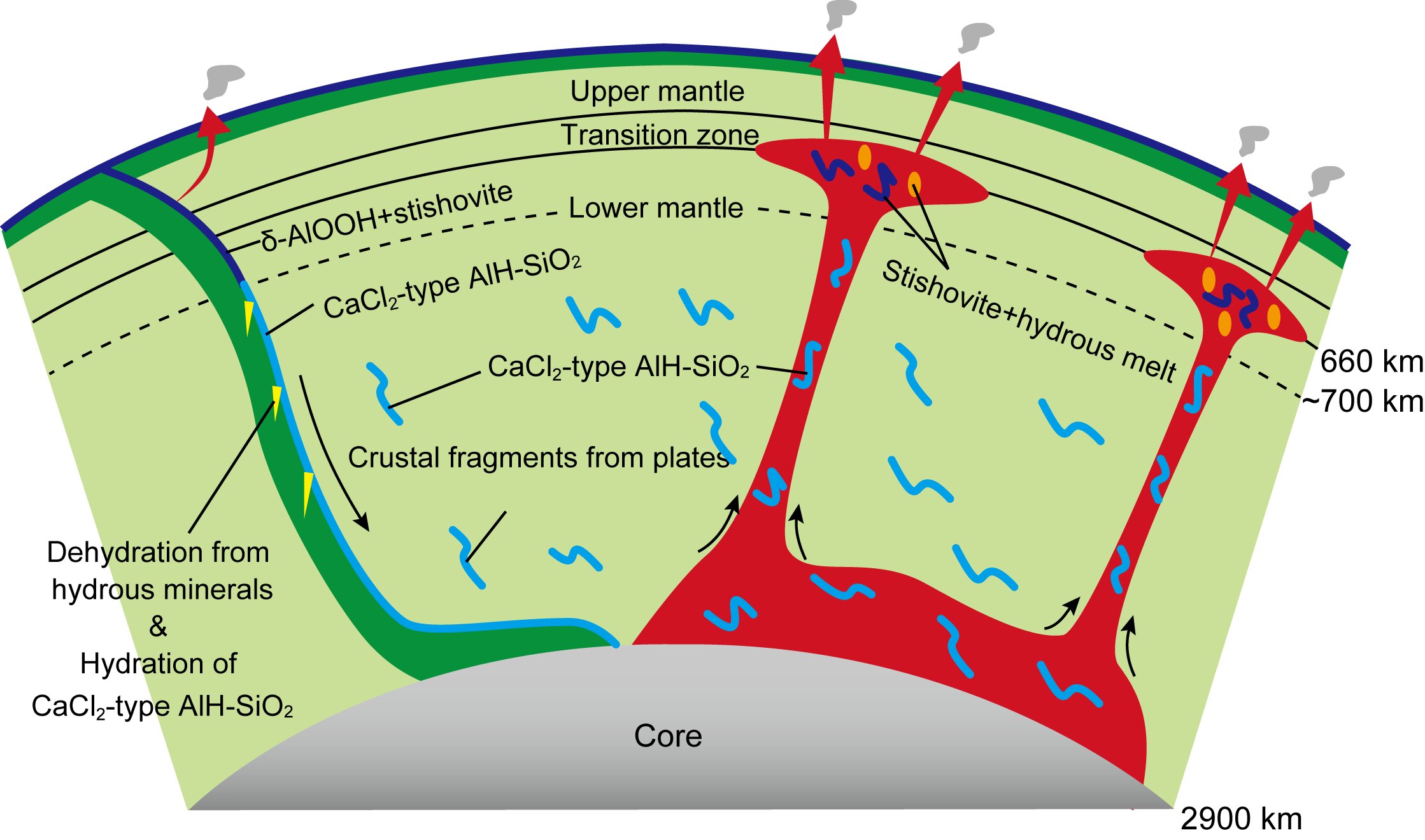Water is transported by oceanic plates into the Earth’s deep interior and changes the properties of minerals and rocks, affecting the Earth’s internal material cycle and environmental evolution since the formation of the Earth.

An international research group…reveals that aluminous silicas play a major role as a water carrier in the lower mantle. They determined the alumina and water contents of silica minerals, which are important minerals in the basaltic crust of the upper part of a subducting plate.
The results show that rutile-type silica (stishovite), which is widely stable in the upper part of the lower mantle, undergoes a phase transition to a CaCl2-type phase, when it contains water and alumina. The CaCl2-type aluminous silica can hold more than 10 times the amount of water than other lower mantle minerals, even at very high temperatures in the lower mantle.
Since the birth of the Earth, water has traveled through the Earth’s surface and interior, triggering earthquakes and volcanic activity and affecting the evolution of the Earth’s interior environment. It is estimated that the amount of water that can be stored in the Earth’s interior is several times that of the seawater on the Earth’s surface.
Water (seawater) is transported to the Earth’s interior by oceanic plates. To prevent water from leaking out of the plates, the minerals that make up the plates efficiently transport water by incorporating it into their crystal structures. It is thought that the minerals are transported by the plates to the lower mantle and then returned to the Earth’s surface by the upwelling plume. It is still not well understood how much water is stored in the Earth’s interior and how it returns to the Earth’s surface. To understand these issues, it is important to know how much water mantle minerals can contain and how stably they can hold water.
Previously reported mantle minerals release water with increasing temperature: their water content generally decreases with temperature. Since temperature increases with depth in the Earth’s interior, this property implies that the water-holding capacity of minerals decreases with depth.
When water is released from minerals, it reacts with rocks to form hydrous magma, which separates from the plate and moves to the surface. Therefore, the depth at which minerals release water is considered to be the upper limit of water transport depth. It has been pointed out that in the lower mantle, which is particularly hot, minerals cannot hold water and may not be able to transport water. Contrary to this property, the minerals synthesized in this study have a water content that increases with temperature and can hold large amounts of water even under the hottest plume conditions in the mantle.
Full article at Phys.org.
Earth’s “deep water cycle,” which transports water from the crust and ocean into the mantle and back, has been recognized as a key feature in supporting optimum plate tectonics to sustain Earth’s habitability. See Reasons.org for an additional article on this topic.